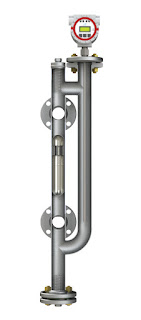 |
| InTap™ DO Analyzer |
Brewers have a complicated relationship with oxygen.
At times oxygen is your friend. It's needed for barley germination. It's needed to synthesize fatty acids and sterols in yeast. And it improves colloidal stability.
Oxygen is also one of the the brewers worst enemies. It has a significant effect on color. It lowers the rate of wort separation. It can cause undesirable flavors. And is causes haze and makes finished beer stale.
By the way, we're talking about the dissolved oxygen (DO) in solution here. Not the external oxygen the water, wort, or beer tank headspace.
By the way, we're talking about the dissolved oxygen (DO) in solution here. Not the external oxygen the water, wort, or beer tank headspace.
Fortunately Mettler Toledo provides instrumentation to assist brewers in they management of oxygen. Their InTap™ DO analyzer with optical technology, is both a portable measurement tool and a convenient calibration instrument. It facilitates measurement and calibration procedures in both process and laboratory settings, and reduces the risk of operator error.
The InTap™ portable oDO analyzer is a portable measurement device for dissolved oxygen
measurement and for calibration and data logging of optical dissolved oxygen ISM® sensors
(InPro® 6970i) installed in the process. The InTap™ and the sensors communicate via Bluetooth.
Measurement point tracking in the InTap™ portable dissolved oxygen meter allows operators to easily connect stored measurement data to different locations in production, making it easy to maintain records point-by-point for traceability and documentation purposes.
Reliable optical dissolved oxygen (DO) sensor technology is also available in the InTap™ portable meter for spot check and reference measurements. With Blue- tooth communication, hassle-free calibration of in-line DO sensors is done quickly and easily.
For more information, contact Alliance Technical Sales. They can be reached by calling 630-321-9646 or by visiting their web site at https://alliancets.com.
For more information, contact Alliance Technical Sales. They can be reached by calling 630-321-9646 or by visiting their web site at https://alliancets.com.






